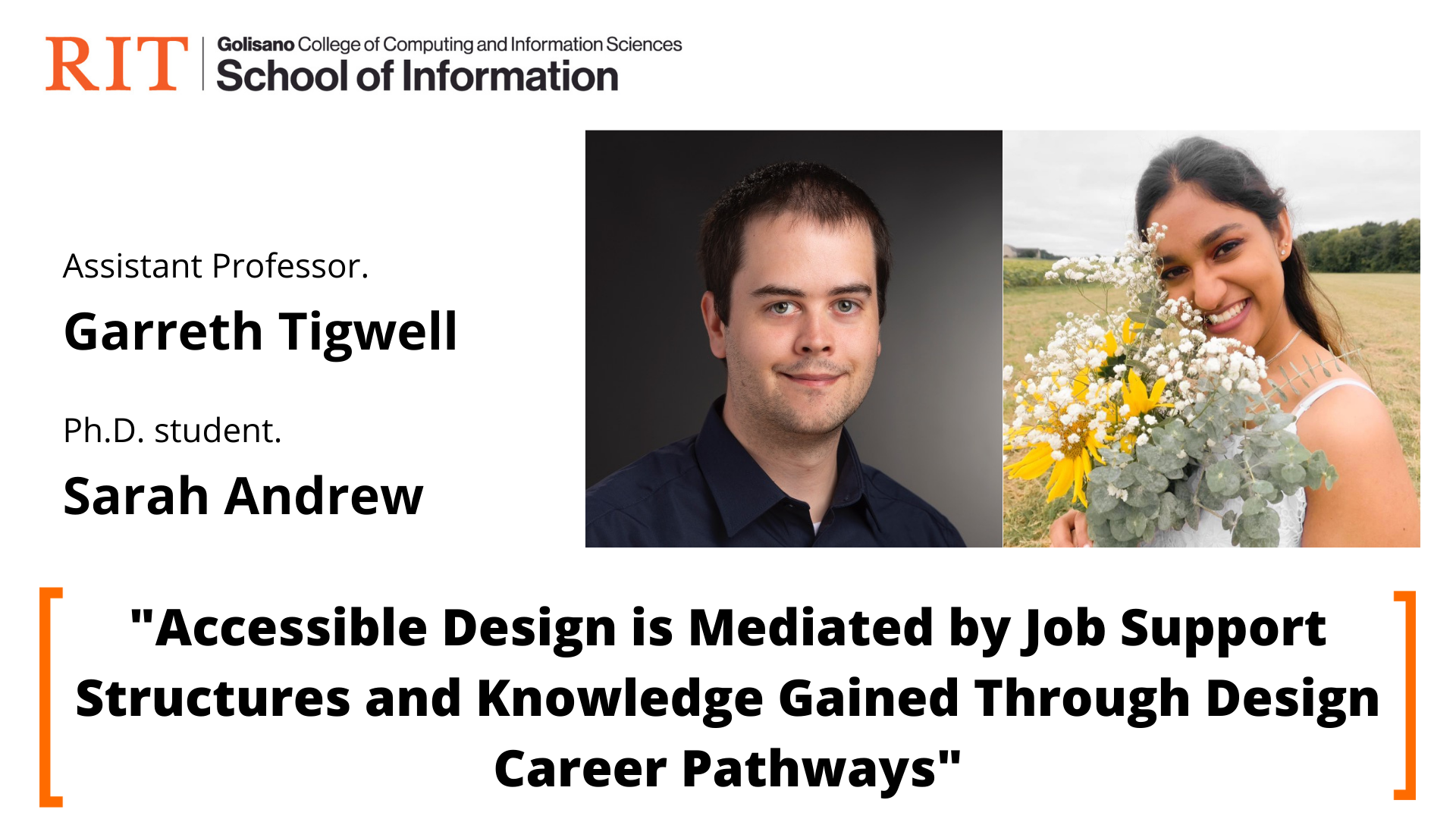Supporting Accessible Design Across Diverse Workplaces
Ph.D. student Sarah Andrew and Prof. Garreth Tigwell published “Accessible Design is Mediated by Job Support Structures and Knowledge Gained Through Design Career Pathways” for the 25th ACM Conference on Computer-Support Cooperative Work and Social Computing which is virtually held from November 8 through 22, 2022.

For more than a half-century, digital designers have had access to information about accessibility. However, digital designers often do not make their work accessible (e.g., websites failing criteria set by the W3C's Web Content Accessibility Guidelines), and accessible design research discusses many solutions to address this problem (e.g., teaching accessibility within university design and technical courses). Recent research has emphasized the need to consider how the accessibility of digital systems is the result of a combination of factors spanning underlying code through to practice design and wider institutional influence. It typically does not acknowledge whether recommendations and resources to support accessible design are suitable for all designers because of different training pathways and job support structures (e.g., large companies vs. rural and self-employed designers or designers who learned their skills outside of formal education settings). Accessibility research is important because about one billion people in this world have a disability, but accessible technology benefits everyone when we consider the need to design for many different implements. Andrew and Tigwell interviewed 20 digital designers from rural to urban areas, working from home and remotely, to understand the challenges they experience in making accessible content within their workplace. They found three major themes from interviews; workplace support structures affect designers’ implementation of accessibility, unique design career pathways affect awareness and understanding of accessible design, and there are hesitations and challenges in connecting with disabled people. Overall, they suggested considering what support is needed that would best help digital designers in different geographical settings, maintaining a reciprocal relationship that fosters strong connections with disabled people, requiring accessible design in the project, and incorporating information on accessible design beyond higher education such as in online tutorials and training materials. The full-length paper is available at https://dl.acm.org/doi/10.1145/3555588









